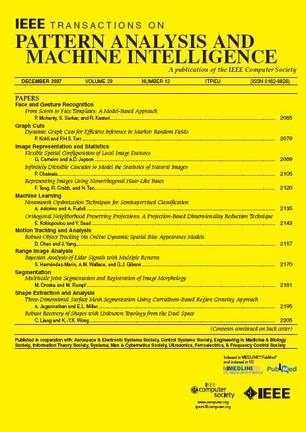I&S-ViT:一种包容稳定的培训后vit量化方法。
IF 18.6
1区 计算机科学
Q1 COMPUTER SCIENCE, ARTIFICIAL INTELLIGENCE
IEEE Transactions on Pattern Analysis and Machine Intelligence
Pub Date : 2025-09-16
DOI:10.1109/tpami.2025.3610466
引用次数: 0
摘要
尽管视觉变压器(ViTs)具有可扩展的性能,但其密集的计算成本削弱了其在工业应用中的地位。训练后量化(PTQ),用一个小数据集调优vit并以低比特格式运行,很好地解决了成本问题,但不幸的是,在低比特情况下,性能会下降更多。在本文中,我们介绍了一种以包容和稳定的方式调节vit的PTQ的新方法- I&S-ViT。I&S-ViT首先确定了vit的PTQ中的两个问题:(1)后softmax激活的流行log2量化器的量化效率低下;(2)后layernorm激活的粗粒度量化粒度的粗糙和放大的损失景观。然后,I&S-ViT通过引入以下方法解决了这些问题:(1)一种新颖的移位-均匀-log2量化器(SULQ),该量化器结合了移位机制,然后进行均匀量化,以实现包容性域表示和准确的分布近似;(2)一种三阶段平滑优化策略(SOS),该策略结合了通道量化和层量化的优势,以实现稳定的学习。对不同视觉任务的综合评估验证了I&S-ViT优于现有的PTQ vit方法,特别是在低比特场景下。例如,I&S-ViT将W3A3 ViT-B的性能提升了50.68%。我们的代码可在https://github.com/zysxmu/IaS-ViT上获得。本文章由计算机程序翻译,如有差异,请以英文原文为准。
I&S-ViT: An Inclusive & Stable Method for Post-Training ViTs Quantization.
Albeit the scalable performance of vision transformers (ViTs), the dense computational costs undermine their position in industrial applications. Post-training quantization (PTQ), tuning ViTs with a tiny dataset and running in a low-bit format, well addresses the cost issue but unluckily bears more performance drops in lower-bit cases. In this paper, we introduce I&S-ViT, a novel method that regulates the PTQ of ViTs in an inclusive and stable fashion. I&S-ViT first identifies two issues in the PTQ of ViTs: (1) Quantization inefficiency in the prevalent log2 quantizer for post-Softmax activations; (2) Rugged and magnified loss landscape in coarse-grained quantization granularity for post-LayerNorm activations. Then, I&S-ViT addresses these issues by introducing: (1) A novel shift-uniform-log2 quantizer (SULQ) that incorporates a shift mechanism followed by uniform quantization to achieve both an inclusive domain representation and accurate distribution approximation; (2) A three-stage smooth optimization strategy (SOS) that amalgamates the strengths of channel-wise and layer-wise quantization to enable stable learning. Comprehensive evaluations across diverse vision tasks validate I&S-ViT's superiority over existing PTQ of ViTs methods, particularly in low-bit scenarios. For instance, I&S-ViT elevates the performance of W3A3 ViT-B by an impressive 50.68%. Our code is available at https://github.com/zysxmu/IaS-ViT.
求助全文
通过发布文献求助,成功后即可免费获取论文全文。
去求助
来源期刊
CiteScore
28.40
自引率
3.00%
发文量
885
审稿时长
8.5 months
期刊介绍:
The IEEE Transactions on Pattern Analysis and Machine Intelligence publishes articles on all traditional areas of computer vision and image understanding, all traditional areas of pattern analysis and recognition, and selected areas of machine intelligence, with a particular emphasis on machine learning for pattern analysis. Areas such as techniques for visual search, document and handwriting analysis, medical image analysis, video and image sequence analysis, content-based retrieval of image and video, face and gesture recognition and relevant specialized hardware and/or software architectures are also covered.

 求助内容:
求助内容: 应助结果提醒方式:
应助结果提醒方式:


